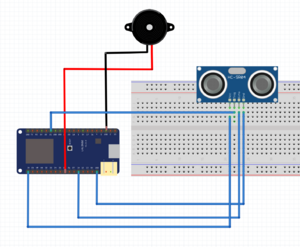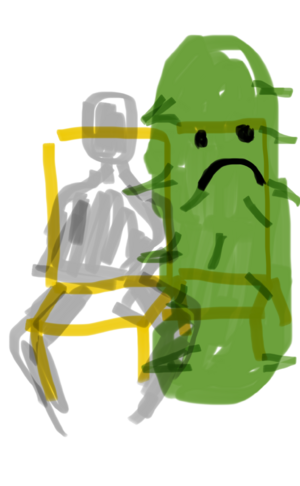User:ZUZU/Projects That May or May Not Be Made: Difference between revisions
No edit summary |
No edit summary |
||
| Line 3: | Line 3: | ||
font-size: 12px; | font-size: 12px; | ||
"> | "> | ||
=<p style=" text-shadow: 0 0 10px #FF0808;font-family:menlo; font-size: 24px;">Project4:Collective Nearby Diary</p>= | |||
<p style="font-family:menlo; color: grey;font-size: 24px;" >What is it?</p> | |||
A workshop aimed at sharing and exploring our ideal "nearby space" visions, integrating individual perspectives into a collective map diary to create possibilities for a new city (or part of a city).<br> | |||
一个工作坊,旨在通过分享和探索我们心中理想的“nearby space”,将个人愿景融入集体地图日记,从而创造一个全新城市(或城市的一部分)的可能性 | |||
<p style="font-family:menlo; color: grey;font-size: 24px;" >Why make it?</p> | |||
When asked by Steve, "If you could design your ideal city, what would it look like?", I find it challenging to outline the possibilities directly. This question feels like it is directed at a macro-level architect, which makes me feel somewhat overwhelmed. Instead, I think it would be more manageable to shift the question from a construction issue to an experiential one. I can then describe the kind of nearby living experience I would like to have in my daily life.<br> | |||
作为一个对steve询问“如果你能设计一个你心中的理想城市”的问题的回应,我发现很难理清该如何直接描述这个城市的可能性,一个可能性是,这个问题是对于一种宏观建设者的提问,让我感到一种无措的棘手,相应的是,我发现可以把问题从建设问题转换成体验问题,转换成从日常的回馈描述这种”你想要体验怎样的near by居住体验?“ | |||
<p style="font-family:menlo; color: grey;font-size: 24px;" >Workflow</p> | |||
So, how do I convey an experience? Or, to delve deeper, what does a "loitering" session in this nearby area look like in my imagination? How can I vividly portray this experience? And, more specifically, how can I use my description to invite someone else into this nearby space?<br> | |||
那么,我该如何传达一种体验呢?或者,更深入地说,在我的想象中,在这附近地区的 "loitering "会话是什么样子的?我怎样才能生动地描述这段经历?更具体地说,我怎样才能用我的描述来邀请其他人进入这个附近的空间? | |||
Production of printed material: lists of verbs, lists of adjectives, collections of strange shaped lines and other small objects<br> | |||
制作印刷材料:动词表、形容词表、奇怪形状线条集合及其他小物件 | |||
<p style="font-family:menlo; color: grey;font-size: 24px;" >Rapid prototypes</p> | |||
*short introduction | |||
*make indivual real nearby map (may include frequently visited places and annotate the map with their personal experiences) | |||
*drawing of ideal nearby diary- Using the provided materials (verb list, adjective list, collection of odd-shaped lines, and other small items) to inspire descriptions of actions and feelings in an ideal nearby space, create a collage diary.利用提供的材料(动词表、形容词表、奇怪形状线条集合及其他小物件),激发对理想附近空间的行动和感受的描述,制作一个拼贴日记 | |||
*share and invite others to join your near by | |||
*put collective nearby together to collage the map make a new city-participant cuts out elements from their ideal drawing of the neighbourhood and adds them to the collective map collaboratively arrange these elements to create a new, synthesised version of everyone's ideas for the neighbourhood.参与者从自己理想的街区图中剪下一些元素,并将其添加到集体地图中,通过合作排列这些元素,创建一个新的、综合了每个人对街区想法的版本。 | |||
=<p style=" text-shadow: 0 0 10px #FF0808;font-family: menlo; font-size: 24px;">Project3:Cactus passenger</p>= | =<p style=" text-shadow: 0 0 10px #FF0808;font-family: menlo; font-size: 24px;">Project3:Cactus passenger</p>= | ||
Latest revision as of 15:02, 12 June 2024
Project4:Collective Nearby Diary
What is it?
A workshop aimed at sharing and exploring our ideal "nearby space" visions, integrating individual perspectives into a collective map diary to create possibilities for a new city (or part of a city).
一个工作坊,旨在通过分享和探索我们心中理想的“nearby space”,将个人愿景融入集体地图日记,从而创造一个全新城市(或城市的一部分)的可能性
Why make it?
When asked by Steve, "If you could design your ideal city, what would it look like?", I find it challenging to outline the possibilities directly. This question feels like it is directed at a macro-level architect, which makes me feel somewhat overwhelmed. Instead, I think it would be more manageable to shift the question from a construction issue to an experiential one. I can then describe the kind of nearby living experience I would like to have in my daily life.
作为一个对steve询问“如果你能设计一个你心中的理想城市”的问题的回应,我发现很难理清该如何直接描述这个城市的可能性,一个可能性是,这个问题是对于一种宏观建设者的提问,让我感到一种无措的棘手,相应的是,我发现可以把问题从建设问题转换成体验问题,转换成从日常的回馈描述这种”你想要体验怎样的near by居住体验?“
Workflow
So, how do I convey an experience? Or, to delve deeper, what does a "loitering" session in this nearby area look like in my imagination? How can I vividly portray this experience? And, more specifically, how can I use my description to invite someone else into this nearby space?
那么,我该如何传达一种体验呢?或者,更深入地说,在我的想象中,在这附近地区的 "loitering "会话是什么样子的?我怎样才能生动地描述这段经历?更具体地说,我怎样才能用我的描述来邀请其他人进入这个附近的空间?
Production of printed material: lists of verbs, lists of adjectives, collections of strange shaped lines and other small objects
制作印刷材料:动词表、形容词表、奇怪形状线条集合及其他小物件
Rapid prototypes
- short introduction
- make indivual real nearby map (may include frequently visited places and annotate the map with their personal experiences)
- drawing of ideal nearby diary- Using the provided materials (verb list, adjective list, collection of odd-shaped lines, and other small items) to inspire descriptions of actions and feelings in an ideal nearby space, create a collage diary.利用提供的材料(动词表、形容词表、奇怪形状线条集合及其他小物件),激发对理想附近空间的行动和感受的描述,制作一个拼贴日记
- share and invite others to join your near by
- put collective nearby together to collage the map make a new city-participant cuts out elements from their ideal drawing of the neighbourhood and adds them to the collective map collaboratively arrange these elements to create a new, synthesised version of everyone's ideas for the neighbourhood.参与者从自己理想的街区图中剪下一些元素,并将其添加到集体地图中,通过合作排列这些元素,创建一个新的、综合了每个人对街区想法的版本。
Project3:Cactus passenger
What is it?
- Two neighbouring chairs on a transport vehicle, when a passenger sits down, the neighbouring chair generates a cactus shaped balloon as a temporary passenger and the balloon starts to inflate.
- Cactus size: Its size depends on the degree of thigh spreading detected when passenger sitting . If the thighs are spread wider, the balloon expands accordingly until it encroaches on the seating space.
- Cactus Scream: collects people's internal activity when public space is invaded and adjusts the content and volume according to the extra space occupied by the passenger.
- Cactus Emoji: an electronic screen that adjusts the emoji according to the extra space occupied by the passenger.
Why make it?
From time to time I have observed a temporary encroachment of public space that I have been experiencing myself: in public transport, waiting areas or other shared seating spaces, it often happens that body space is encroached upon by others. Through this interaction I hope to observe how people react to this encroaching experience, including whether they change the way they sit or how they interact with the balloons around them making people aware of how their physical behaviour affects the use and perception of the space around them.
Workflow
Determine the design of the cactus-shaped balloon, the seating sensors, the balloon expansion mechanism, the sound feedback system (cactus scream), and the electronic screen displaying the emoticons (cactus emoji)
Production
Testing
Timetable
Rapid prototypes
Previous practice
Relation to a wider context
Unspoken anger and repression that is encouraged to be expressed
Project1:
What is it?
Why make it?
In China, many feminists choose voluntary celibacy and non-marriage as a form of nonviolent revolution against patriarchal norms. However, in the Chinese language context, the pronunciation of "rights" is the same as "fist." Consequently, many males derogatorily refer to feminism as "female fists" (女拳), attempting to dominate discourse through this derogatory term. In response to this stigmatization, I believe the fist is an excellent symbol. It symbolizes strength, anger, and courageous resistance, serving as a powerful and intuitive symbol. When women express anger, this symbolic punching machine can represent them delivering a strong punch.


